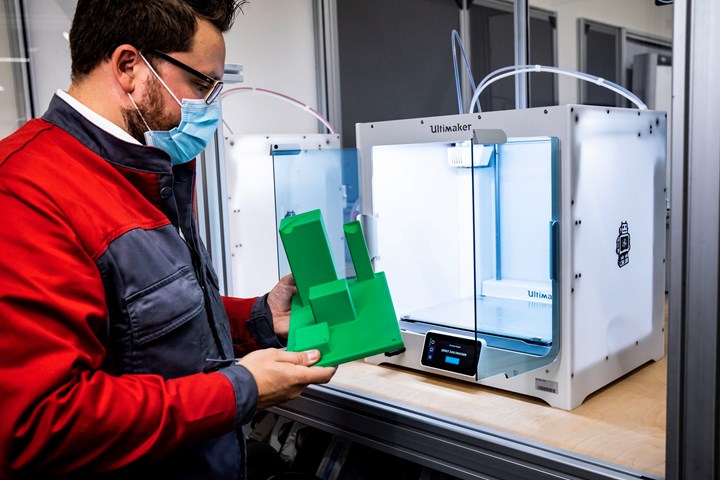Audi Creates 3D Printing Filament from Parts Packaging
The German automotive company is among the leaders in material reuse—which includes making filaments from what might otherwise be considered waste.
Although manufacturers of all types generally try to present themselves as good corporate citizens when it comes to the environment, with many making pledges about carbon neutrality at some point in the not-too-distant future, arguably one of the most aggressively committed companies in the automotive space has to be Audi GmbH.
Perhaps this has something to do with the fact that (1) it is a premium brand and (2) it has a comparatively small volume for being a mass manufacturer (i.e., it sold 1,681,000 vehicles in 2021—and Audis are available in more than 100 countries, so it has a large market space).
But the company is not only going down the route of electrifying its products (starting in 2026 all newly introduced Audis will be all-electric) but is making a big commitment to operating in a circular economy in ways that might not be expected of a vehicle manufacturer.
For example, it has launched a pilot project with partners Reiling, Saint-Gobain Glass and Saint-Gobain Sekurit to take broken auto glass collected from Volkswagen Group repair facilities and transform it into new windows that will be used in new Q4 e-tron vehicles.

The Audi e-tron GT is the first Audi that had its production planning performed without physical prototypes, as virtual planning was used instead. Then when pre-series production was to commence, there were 3D printed assembly tools in place ready to go, as digital inputs derived during that planning work were used to drive the printers. Photo Credit: Audi
In the additive space it has undertaken a project site at its Neckarsulm facility focused on collecting the plastic packaging (the blister packaging that is familiar to everyone who gets e-commerce packages on their porches) that protects components in the plant used in the assembly of A6 and A7 vehicles.
This plastic material is sorted, shredded, granulated, dried, heated to 450°C, then extruded into filaments. Audi engineers worked with personnel from 3devo, a filament production equipment developer based in The Netherlands.
These filaments are then used to 3D print assembly tools for the factory.
The proverbial “waste not, want not” in action at Audi.
Related Content
-
How GM Is Investing in Additive and EVs
People within the automaker aren’t just working with additive, they are actively promoting it to their colleagues throughout the organization.
-
How Aggressive EV Timelines Point to AM
Electric vehicle sales are expected to grow significantly in the next decade. Additive manufacturing can help automakers fill their production needs.
-
Multimaterial 3D Printing Enables Solid State Batteries
By combining different 3D printing processes and materials in a single layer, Sakuu’s Kavian platform can produce batteries for electric vehicles and other applications with twice the energy density and greater safety than traditional lithium-ion solutions.

.jpg;width=70;height=70;mode=crop)













